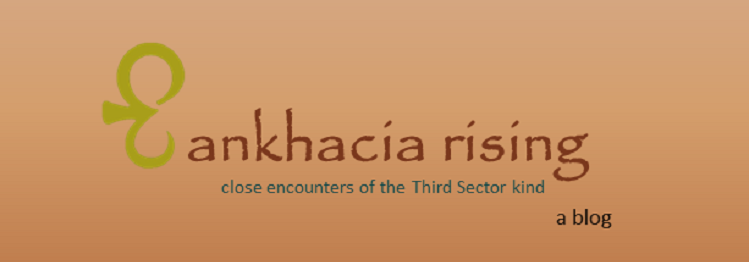Online Giving: Are you working it in your NPO?
/Online giving has been growing in frequency and popularity in recent years and there’s no wonder why. The tech-savvy among us conduct a sizable amount of financial transactions online, most notably retail purchases and banking.
As we’ve grown more accustomed to the virtual, always-on, convenient nature of life in cyberspace (and the disquieting notion of our every keystroke being tracked), it’s to be expected that more of us will feel less queasy about baring our financial all. So it stands to reason that the smart nonprofit should get its act together and grab its share of the millions to be raised, right?
Well then, what are YOU waiting for? I know, pretty bold (or psychic) of me to assume that you likely weren’t among the more than 100,000 organizations for whom online fundraising processors PayPal, Blackbaud and Network For Good reported on in 2012 to the Chronicle of Philanthropy as having seen their online donations rise to double digits in 2012 over 2011.
How, you wonder, can I be so presumptuous?
Because earlier this month they ran another story on online giving, this time lamenting that “Most Nonprofits Fail at Online Fundraising Basics …”. In this group of 151, 100 are big enough to be included on The Chronicle’s top 400 NPOs that raise the most in private contributions.
Now, to be thorough, the previously mentioned article noted how small (10%) a slice online-giving was of the overall contribution pie, so there’s already an indication that the tactic lags significantly behind other more traditional methods of fundraising.
But what struck me about the more recent article is the assumption by the researchers that the efforts among NPOs to establish and increase the level of participation lacks a definitive will, that somehow they aren’t trying hard enough.
Now social entrepreneurs and all manner of nonprofit leaders, especially those working on the fringes of everything, are a pretty resourceful bunch.
Committed to their missions, programs, staff and constituencies, they’re always on the lookout for not necessarily the easiest or the quickest, but definitely the most effective, least resource-draining means to its end.
They’ll try almost anything that they’re reasonably certain will raise awareness and money. I know, because I’ve worked with and for these organizations, trying to find a place for online giving among the other tried and true methods we’d used.
Its power and potential was known. We’d worked to duplicate the campaigns we saw others in our industry launch. But like so many other efforts that stretch the limits of an already taxed fundraising staff, we didn’t have the time, expertise, or means to either launch it well or assess where we went wrong. A lack of will to work harder had nothing to do with it.
I don’t offend easily and will resist the urge to find this an occasion to be so. The article does suggest a number of areas where the researchers saw deficits in connecting with donors, including the absence of emotional hooks, failure to encourage email message sharing and calls to action. After a smidge of wordsmithing, I’ve turned the ones below into helpful hints as opposed to critiques:
send emails within 30 days after visitors sign up to receive them;
ask for a donation within 90 days of people’s signing up
personalize email appeals with a supporter’s first or last name
make sure the donation page is less than three click-throughs from the
start of the donation process
But even as these tips are useful to know, can they be applied if you don’t know what “click through” means, have software to set up a sign-in page or have someone to monitor and manage the whole process? Online Giving: Are you working it in your NPO?
Helping to ward off my urge to fuss through my laptop at these folks, was a comment, interestingly enough, made in response to the first article I referenced above, though it was more apropos to the latter.
The comment came from Bradley Good, CEO of OurGroup.org, a morphing of crowdfunding and social networking that gives nonprofits a platform tell their stories, rally a supporting community of individuals, businesses and other groups, then facilitates donation processing. He made several points identifying the challenges around online giving faced not only by nonprofit organizations, but companies and individuals.
The issues he listed as of particular concern to nonprofits:
“too many expensive and independent systems (volunteer system, donor
tracking, online event planning, Facebook, Twitter)
want to involve broader audience
really just want more funds
spend too much time fundraising
bogged down by IT and administration”
Reading this I thought back on the discussions I’d had about online fundraising and whether to even begin the endeavor because of these very same issues. THIS is “what’s holding them back”, to quote one of the subheadings of the recent article.
Show organizations a way to incorporate online fundraising that deftly addresses at minimum the points made by Mr. Good and the slice will certainly grow. Now I’m not endorsing the OurGroup.org model but I am all for innovation as a means of increasing results with reduced inputs.
How about you? What’s your experience been with online giving?

